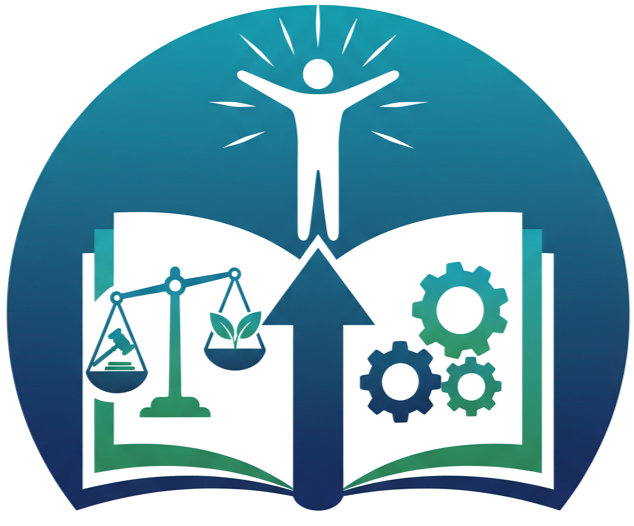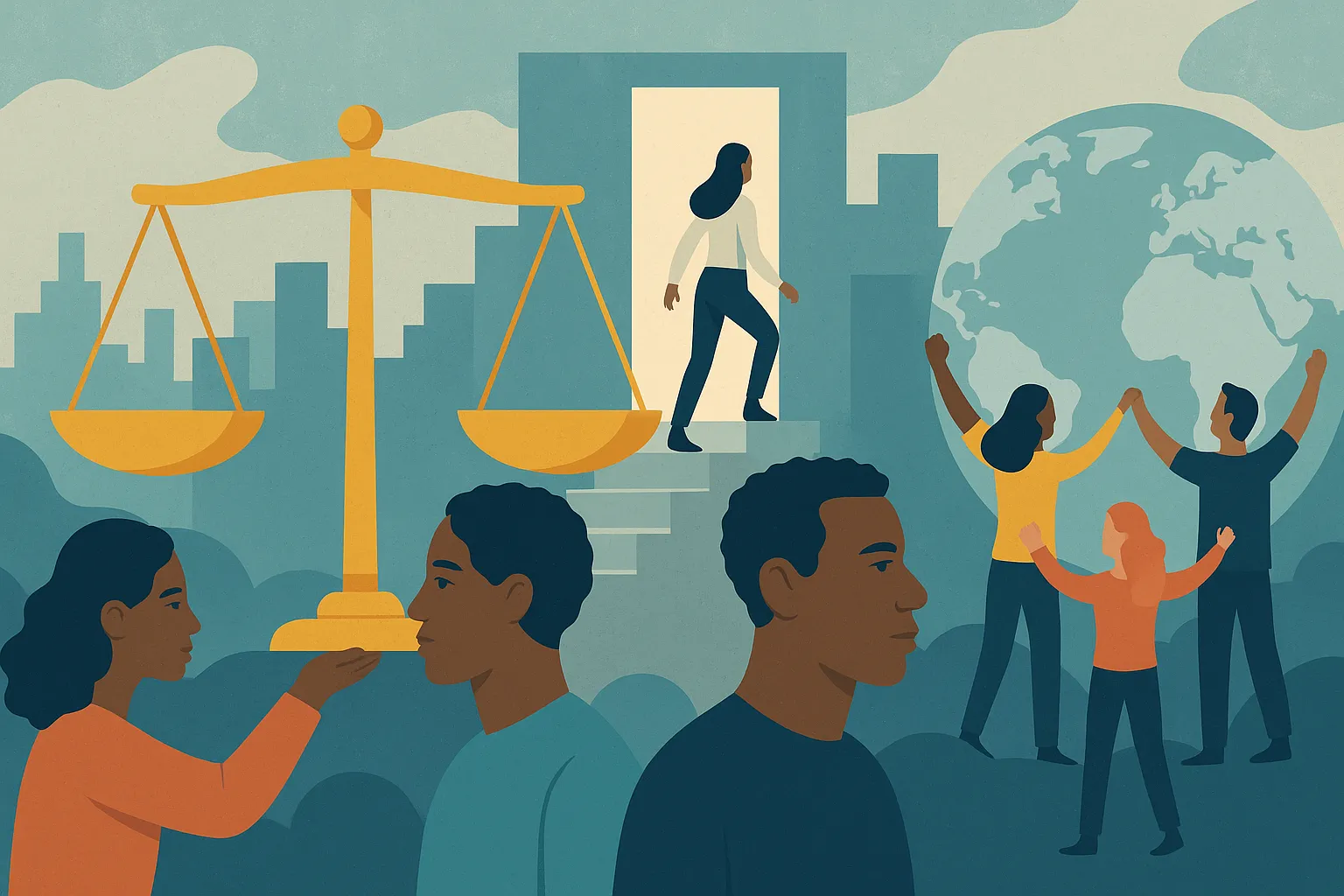A Measure of Humanity
The strength of any society is not determined by the wealth of its most powerful citizens, but by how it treats its most vulnerable. The elderly, children, people with disabilities, marginalized communities, and those living in poverty are often the ones most affected by systemic neglect and social inequality. Protecting them is not only a moral obligation — it is the foundation of justice and compassion in a modern, democratic world.
Vulnerability takes many forms. It can arise from physical fragility, economic disadvantage, social exclusion, or psychological trauma. But the common thread is exposure — to harm, to indifference, to systems that fail to provide support when it is needed most. In today’s fast-paced, competitive world, those who fall outside the margins of privilege often go unseen, unheard, and unprotected.
A humane society is one that recognizes these imbalances and actively works to correct them. Protection is not charity; it is equity in action. It means ensuring that everyone — regardless of background, ability, or circumstance — has access to safety, dignity, and opportunity.
Understanding Vulnerability
To protect the vulnerable, we must first understand what vulnerability means in context. It is not a permanent state but a condition shaped by environment, policy, and circumstance. A person becomes vulnerable not simply because of who they are, but because of the barriers society has built around them.
For example, a person with a disability may be vulnerable not due to the disability itself, but because public infrastructure fails to accommodate their needs. A single parent might struggle not because of personal failure, but because affordable childcare is inaccessible. Vulnerability, therefore, is often a reflection of structural neglect rather than individual weakness.
Recognizing this distinction is crucial. It shifts responsibility from the vulnerable person to society as a whole. It asks communities, governments, and institutions to examine their own role in perpetuating inequality — and to take responsibility for changing it.
The Moral Responsibility of Institutions
Institutions — whether governmental, educational, or corporate — hold the greatest power to protect or neglect the vulnerable. Their policies and practices determine who receives support and who falls through the cracks. When designed with empathy, institutions can empower people to overcome disadvantage; when guided by bureaucracy or profit, they can deepen inequality.
Public institutions such as healthcare systems, social services, and law enforcement are particularly influential. Their duty is not just to serve the public efficiently, but to do so ethically and inclusively. A truly just institution listens to those it serves, adapts to their realities, and treats protection as a core value rather than a secondary goal.
Unfortunately, too many institutions still operate on models that prioritize control over care. Vulnerable individuals often encounter systems that are rigid, impersonal, and intimidating. This creates cycles of exclusion — people disengage, lose trust, and stop seeking help altogether. Breaking this cycle requires a transformation of mindset: one that places humanity above procedure.
Social Safety Nets and Economic Justice
In modern societies, economic vulnerability remains one of the most pressing issues. Rising living costs, unstable employment, and unequal access to education continue to widen the gap between privilege and poverty. For millions of people, one unexpected event — an illness, job loss, or rent increase — can lead to crisis.
Social safety nets exist to prevent such crises from becoming permanent. Unemployment benefits, disability support, housing assistance, and healthcare coverage are not luxuries; they are essential instruments of stability. When these programs are strong, they protect entire communities, not just individuals. When they are weak or underfunded, inequality grows unchecked.
Economic justice also extends to fair wages and equal opportunities. Workers in low-income or precarious positions — often women, migrants, and minorities — face systemic barriers to advancement. Protecting the vulnerable means dismantling those barriers through fair labor practices, inclusive hiring, and social investment.
A society that refuses to let its citizens fall into despair demonstrates strength, not weakness. It recognizes that prosperity is collective — that everyone benefits when the vulnerable are supported, not ignored.
The Role of Law and Policy
Laws are among the most powerful tools for protecting the vulnerable. Anti-discrimination acts, child protection laws, accessibility mandates, and human rights frameworks all serve as shields against exploitation. But laws alone are not enough; they must be enforced, updated, and applied with integrity.
Too often, legal protections exist on paper but fail in practice. Marginalized individuals may lack the knowledge, resources, or confidence to navigate complex legal systems. This is why accessibility — not only in buildings but in rights — is essential. Justice that cannot be reached is justice denied.
Progressive policy must also evolve with society’s changing realities. For example, digital vulnerability is now a growing concern. Online harassment, data exploitation, and misinformation disproportionately affect those already marginalized. Protecting people today means recognizing that vulnerability now extends into virtual spaces, and that modern laws must safeguard dignity in both physical and digital environments.
Healthcare and the Right to Dignity
Healthcare is perhaps the most visible reflection of how society treats its vulnerable members. Access to affordable, compassionate, and culturally competent care determines not only physical survival but also human dignity.
Those most in need of care — the poor, the elderly, people with disabilities, refugees, and marginalized minorities — are often the ones least able to access it. Language barriers, cost, discrimination, and lack of trust can all keep them away from essential services.
To protect them, healthcare systems must shift from a model of treatment to one of inclusion. This means investing in preventive care, mental health support, and outreach programs that meet people where they are. It also means recognizing that health is not purely biological — it is social, economic, and environmental. A person’s housing, employment, and community all impact their well-being.
Protecting health is therefore inseparable from protecting dignity. It requires compassion as much as competence.
Technology, Privacy, and New Frontiers of Vulnerability
In the digital era, technology offers both empowerment and risk. While online platforms connect communities and expand access to information, they also expose individuals to new forms of harm — cyberbullying, identity theft, surveillance, and misinformation.
The vulnerable are particularly at risk. Elderly users may fall prey to scams; children may be exposed to predatory behavior; marginalized groups may face targeted harassment. These realities demand modern solutions.
Tech companies must bear ethical responsibility for the systems they create. Transparency in data collection, regulation of harmful content, and education on digital literacy are crucial safeguards. Just as governments regulate physical safety, digital safety must now be treated as a public priority.
Technology can and should be a force for inclusion — helping people access services, education, and opportunity. But without oversight, it can also deepen isolation. Protecting the vulnerable in the digital age means building systems that are safe by design, not safe by accident.
Community as the First Line of Defense
While laws and policies provide structure, communities provide heart. Real protection often begins on the ground — in neighborhoods, schools, workplaces, and families.
When communities are connected, they notice when someone is struggling. When they are fragmented, suffering goes unseen. Simple acts of care — checking in on a neighbor, supporting local outreach programs, mentoring at-risk youth — can make the difference between despair and resilience.
Community protection also includes advocacy. Local organizations and activists often have the deepest understanding of what vulnerable groups truly need. Governments should view them as partners rather than critics. Empowering communities to take part in decision-making not only improves outcomes but strengthens democracy itself.
From Awareness to Action
Recognizing vulnerability is only the first step; the true challenge lies in turning awareness into tangible action. Modern societies can no longer rely on moral rhetoric or temporary campaigns to demonstrate care — protection must be woven into every level of policy, infrastructure, and culture. When awareness remains theoretical, the vulnerable continue to fall through gaps created by bureaucracy or indifference.
Action begins with intentional design. Systems must be built with empathy as a guiding principle, not added later as a correction. Whether in urban planning, healthcare, education, or digital access, inclusion must be part of the foundation. A well-designed policy doesn’t just react to inequality — it anticipates it. By considering the needs of the most at-risk individuals from the start, societies can prevent harm instead of responding to it afterward.
This proactive mindset represents a shift from charity to justice. It transforms protection from something we give to something we guarantee.
Education as Empowerment
Education is one of the most powerful tools for breaking cycles of vulnerability. It not only provides individuals with skills but also with agency — the ability to make informed decisions about their lives. Access to quality education, however, remains uneven across social and economic lines.
Children from low-income families, minority groups, or unstable homes often face barriers long before they enter a classroom. Hunger, inadequate housing, and lack of parental support make learning secondary to survival. For them, schools can be both a place of refuge and the first line of protection.
When educators are trained to recognize signs of neglect, abuse, or emotional distress, they become more than teachers — they become advocates. Inclusive education also means adapting systems to accommodate differences: language diversity, learning disabilities, and cultural backgrounds must all be seen as part of human variety, not as exceptions to the rule.
At a broader level, education fosters empathy. When curricula include lessons on equality, mental health, and civic responsibility, they cultivate a generation that understands the importance of protecting others. Knowledge is not only power — it is protection in itself.
Inclusion as a Social Imperative
Inclusion is the bridge between recognition and equality. It means more than simply allowing vulnerable groups to exist within society — it means ensuring they can thrive within it. Inclusive systems are designed to remove barriers rather than simply accommodate them.
Physical inclusion requires accessible infrastructure: buildings, transport, and public spaces designed for all abilities. Economic inclusion means fair wages, accessible credit, and equal opportunity. Cultural inclusion demands that diverse identities — race, gender, religion, sexuality — be represented respectfully in institutions, media, and leadership.
When people see themselves reflected in the world around them, they feel valued. This validation strengthens social cohesion and reduces isolation. Conversely, when systems ignore or exclude certain groups, they reinforce vulnerability by denying belonging.
True inclusion requires continuous effort. Policies must evolve with changing demographics and social realities. It also requires listening — involving marginalized communities in decision-making rather than deciding on their behalf. Protection becomes most effective when it is collaborative, not paternalistic.
Health, Mental Well-Being, and the Modern Crisis of Care
In today’s fast-paced and competitive world, mental health has emerged as one of the most pressing areas of vulnerability. Stress, anxiety, and loneliness are now recognized as public health concerns that can be as debilitating as physical illness. For many, especially those facing economic hardship or social discrimination, access to mental health care remains limited or stigmatized.
Protecting the vulnerable requires redefining what care means. It is not limited to emergency response or hospital treatment — it includes preventive care, emotional support, and accessible community services. Mental well-being should not depend on privilege. Affordable counseling, open dialogue about mental health, and community-based peer networks can drastically improve quality of life.
Equally important is the recognition that mental health intersects with all other vulnerabilities. Discrimination, poverty, and trauma compound one another. A single mother living in poverty, for example, may suffer from chronic stress that affects both her health and her children’s development. Holistic protection therefore means addressing interconnected causes, not isolated symptoms.
A compassionate society invests in mental health as a public good — not as an afterthought, but as a cornerstone of human resilience.
Technology and Ethical Innovation
Technology has the power to protect or to exploit, depending on how it is designed and used. When guided by ethical responsibility, digital innovation can empower vulnerable groups by expanding access to education, healthcare, and legal support.
Artificial intelligence, for example, can be used to detect early signs of abuse or neglect, to improve accessibility for people with disabilities, and to predict social risks before they escalate. Yet, without oversight, the same technologies can reinforce discrimination through biased algorithms or invasive surveillance.
Ethical technology demands transparency, accountability, and inclusivity in design. Developers, policymakers, and users must all participate in defining how technology serves humanity. Vulnerable populations should never be treated as data points but as partners in shaping digital systems that impact their lives.
As the digital divide widens, ensuring equitable access to technology becomes another form of protection. Every citizen deserves the digital literacy and resources necessary to participate safely in the modern world.
The Role of Global Solidarity
Vulnerability transcends borders. Issues like poverty, displacement, and climate change create shared global challenges that require collective responsibility. Refugees, for example, often embody multiple forms of vulnerability — loss of home, identity, and safety. Protecting them is not an act of charity by wealthy nations but an obligation rooted in shared humanity.
International cooperation through organizations such as the United Nations, humanitarian NGOs, and local alliances ensures that protection extends beyond national interests. Global solidarity also means addressing the root causes of vulnerability — war, corruption, and environmental destruction — rather than merely responding to their consequences.
Climate change is another urgent example. As rising sea levels, droughts, and extreme weather events displace millions, new forms of vulnerability are emerging. Protecting the vulnerable in this context means protecting the planet itself. Environmental justice is inseparable from human justice.
Accountability and the Cycle of Reform
Protection is only as strong as the systems that uphold it. Laws, social programs, and institutions must be monitored and evaluated to ensure they remain effective and fair. Without accountability, even the most well-intentioned initiatives can become stagnant or corrupt.
Independent oversight bodies, watchdog organizations, and free media all play vital roles in maintaining transparency. Citizens must also have accessible channels to report abuse, neglect, or inequality without fear of reprisal.
Reform should not occur only after tragedy. Systems must continuously evolve through data, research, and community feedback. This cyclical model — action, reflection, improvement — keeps protection dynamic and relevant.
When accountability becomes habitual, justice becomes sustainable.
A Shared Future of Care
Protecting the vulnerable is not merely a government function; it is a shared cultural value. Every citizen, community, and institution plays a part in creating a society where compassion is the default response to suffering.
Empathy, when practiced collectively, becomes power. It changes how we design cities, how we educate children, how we treat workers, and how we interact with strangers. It creates economies that prioritize well-being, not just profit. It transforms justice from punishment into restoration.
Ultimately, protection is not about division between the strong and the weak — it is about recognizing that everyone, at some point, becomes vulnerable. Illness, loss, and uncertainty touch every life. By protecting the vulnerable today, we safeguard ourselves tomorrow.
Conclusion
A truly civilized society is one that ensures no person is invisible, no voice unheard, and no suffering ignored. Protecting the vulnerable requires more than empathy — it requires structure, persistence, and courage. It means building systems that reflect the best of our humanity rather than the convenience of our privilege.
When awareness leads to education, when inclusion becomes policy, and when compassion turns into daily practice, vulnerability loses its power to marginalize. Instead, it becomes a reminder of our shared responsibility — that justice is not achieved by the few but by the collective strength of many.
To protect the vulnerable is to protect the very idea of civilization itself. It is to declare, again and again, that dignity belongs to everyone — not by merit, but by right. And in that commitment lies the truest measure of progress.




